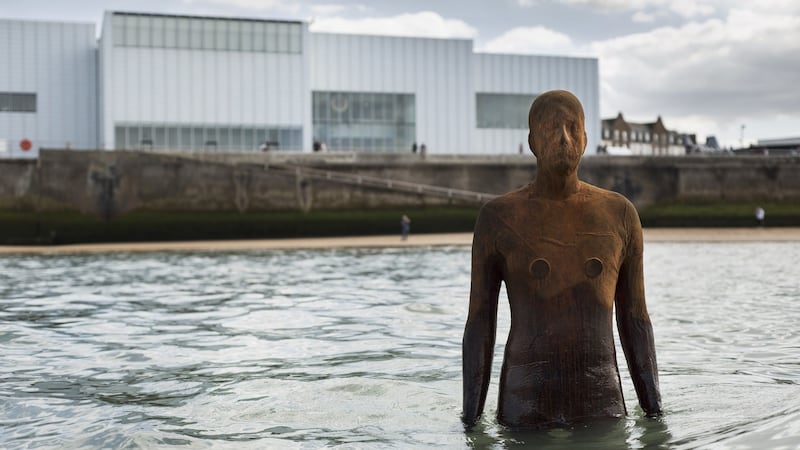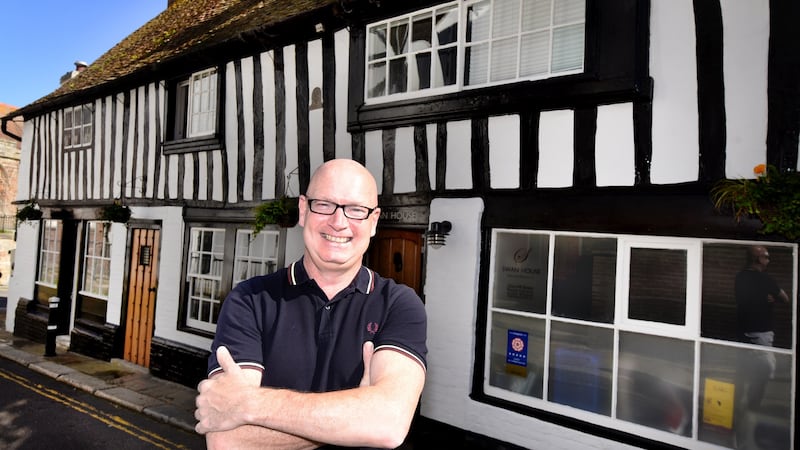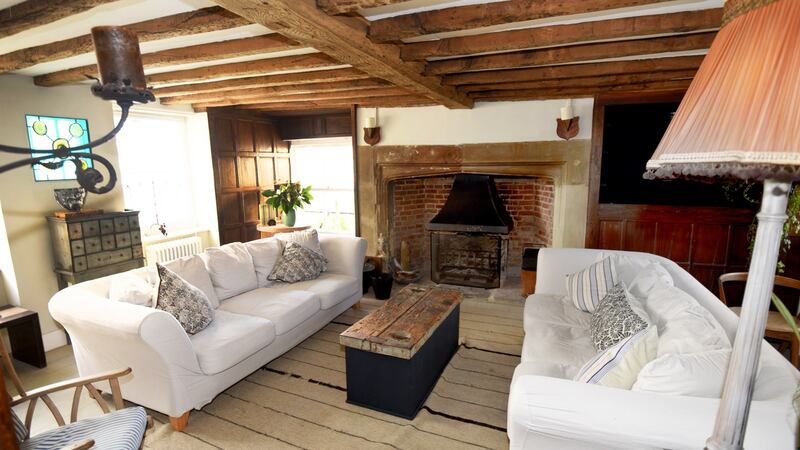Around three hours before low tide, visitors to the glassy, sleek Turner Contemporary in Margate will see a head emerging from the sea. Over time it will reveal itself to be a human body, standing upright, perfectly still. These onlookers would have cause for concern if they weren’t aware it is part of sculptor Anthony Gormley’s Another Time installation, and might be more concerned if they’d caught the experience the other way around, with the body submerging back into the sea.
But for some, the biggest surprise of all is that the celebrated high-art statue is found in Margate, formerly known for its bucket ’n’ spade brigade.
Over the course of the last few years, such innovations are both the cause and effect of trendy youngsters relocating and reviving the area. Priced out of London, an average-earning, life-loving sliver of society have sought to move to the coast, bringing their creative nature and cold-brewed coffees with them. No wonder Margate has earned the nickname “Shoreditch on Sea”.

The hipster clientele is evident in the narrow streets of the old town, where a row of antique stores, bookended with independent pubs selling craft beer, lead to a paved square where a mix of people hang around waiting for their turn at The Greedy Cow Café. This well-priced restaurant is famous for its pulled-pork burgers, though the vegan hot dogs are a bestseller too.
The precarious pound and the tightening of purse strings since the Brexit vote have helped Margate’s fortunes; three in five British people will holiday at home this summer. Margate and other seaside towns are busily revamping their shorelines for a new generation of visitors, taking their cue from Brighton’s example from the early 2000s.
Brighton
Located a 55-minute train from London (when the much-maligned Southern Railway runs to schedule, anyway), Brighton is now firmly established as a hub for creatives attracted to its sea air, the South Downs just behind it, and more enjoyable pace of life. It says plenty about its left-field community that the UK’s only Green Party MP is sent from Brighton. That’s also shown in a walk around The Lanes – narrow passageways filled with independent shops and premium chain stores like Kiehls and Aveda that want in on its buzz.
The music lover’s paradise of Bella Union Vinyl Shop & Coffee a stone’s throw from the Royal Pavilion, an Indo-Chinese palace designed by John Nash.
Vegans will be in their element too, thanks to a range of options from high-end dining at Terre à Terre to The Victory, a dive bar with Foo Fighters on the stereo and a mostly vegetarian menu. And let’s not forget the lure of Brighton’s nightlife, nor its festivals such as Pride and music-industry favourite The Great Escape.
Hastings
As buzzing as it is, now that Brighton’s as saturated and pricey as London, its vibe and visitors are spreading further afield, to places such as Hastings, home of Love/Hate and Peaky Blinders director David Caffrey.
“First the artists move in, then the gay community move in, then the aspirational middle-class types move in,” says Caffrey, who relocated his family to St Leonards-on-Sea, an area adjoining Hastings, in 2009.
“We’re a little bit artist, a little bit gay, and a little bit middle class. So when we were looking to move out of London, Hastings suited us. I grew up by the sea in Wicklow, so I wanted somewhere that was by the sea and if not commutable, then at least accessible to London.”
'We're not stuck in pubs, we're not doing the three-course meal, it's not even the poncey sharing plate thing anymore. It's about experiences that are a wee bit different'
Since then, he notes, the area’s begun to thrive with a packed calendar of festivals, including the UK’s largest Mardi Gras celebrations, independent coffee shops and restaurants, the Jerwood Gallery (a contemporary gallery, seafront cafe and shop), and an independent theatre. So while we’re ships in the night – the weekend I’m in Hastings, he’s in Dublin filming forthcoming RTÉ drama Taken Down – Caffrey has plenty of recommendations.
“The Kino-Teatr always has cool events and festivals,” he explains. “The owner, Olga Baker, is a Hibernophile – she loves everything Irish – so there are lots of Irish things going on. And La Bella Vista is a traditional Italian run by a family who really go over the top. They wear dickie bows and braces, and you get kisses on either cheek when you go in.
“For lunch there’s a place on the seafront called Kassa, which does delicious Mediterranean food. And if you wanted to get your eyes tested while you’re eating chickpeas, they’re also an opticians.”
The novel mix reminds me of the Boulevard Bookshop and Thai Cafe, further down the seafront in Hastings’ Tudor-fronted old town. Originally a second-hand bookshop, the owner’s wife June (or Natthawan) began using the space as a restaurant, and now they open to BYOB patrons who buy books if they’ve spotted something interesting, while dining on home cooking like chicken satay and massaman curry.

The quirkiness of their offering is in keeping with the spirit of Hastings, says boutique B&B owner Brendan McDonagh. Originally from Belfast, he opened the four-bedroomed Swan House 12 years ago. He and his then-partner Lionel Copley brought the 15th-century cottage bang up to date, making it a cosy, sleek home from home that has more in common with Soho Farmhouse than the Hastings of arcade games and fish ’n’ chips, “...knobbly knees, ice cream, hankies on the head, sandals on the socks, and all that,” he completes.
“That definitely happened, but businesses are quickly adjusting to the way we are now. Like we’re eating and drinking al fresco more than I can remember. You see that with places like Boulevard Bookshop and the Cafe Maroc, a Moroccan. We’re not stuck in pubs, we’re not doing the three-course meal, it’s not even the poncey sharing plate thing anymore. It’s about experiences that are a wee bit different.”

Up and coming
To manage expectations, potential visitors should note that these up-and-coming towns are at different stages of their revival. In Hastings, The Net Shop, a jellied eel bar, is located across the road the slick-looking Jerwood Gallery – a fine example of how the traditional mixes with the contemporary. Mostly, the highlights are clustered together in a small area, usually the old towns. A couple of streets away from this beating heart, and it’s back to the residential seaside town of yesteryear, especially in Margate where rows of terraced townhouses stand in various states of disrepair.
But the landscape continues to change. In Hastings, its 2017 Stirling Prize-winning pier has now found a foreign investor after its previous owners fell into administration, though locals are campaigning to take ownership of it themselves. Artist Tracey Emin is relocating back to her roots in Margate, and nearby The Libertines are refurbishing the Palm Court Hotel into a hotel and studio, due to open in the coming months.
Know the right places to go, and these seaside towns provide a thoroughly modern outing that now suits hipsters and high-flyers. And aside from Anthony Gormley’s welded creation at low tide, there’s not a knobbly knee in sight.
Getting there
Flights: All three coastal towns are best served by London Gatwick, with direct flights from Dublin, Cork, Shannon and Knock (from €35 return).
Where to stay: For boutique luxury in each town, try The Reading Rooms, Margate (rooms from €175), Swan House Hotel, Hastings (€130), and Hotel Una, Brighton (€120).
Where to eat: In Margate, try Olby's Soul Café for hearty food in an informal atmosphere. For an upscale option in St Leonards, St Clements has an inventive British menu and is a local favourite for special occasions. In Brighton? It's hard to make a bad move.











